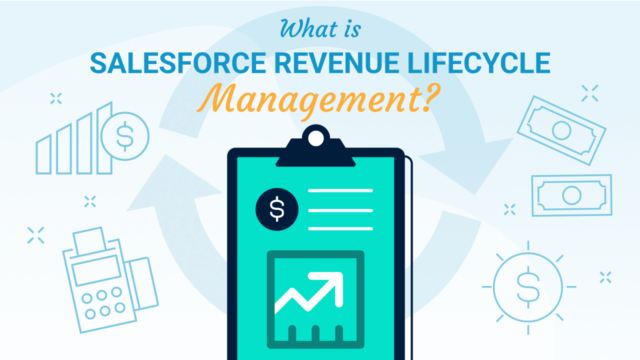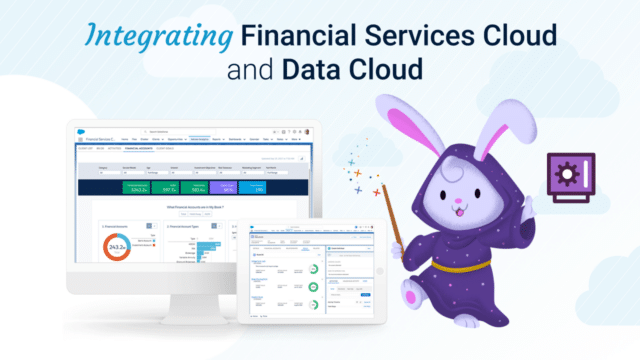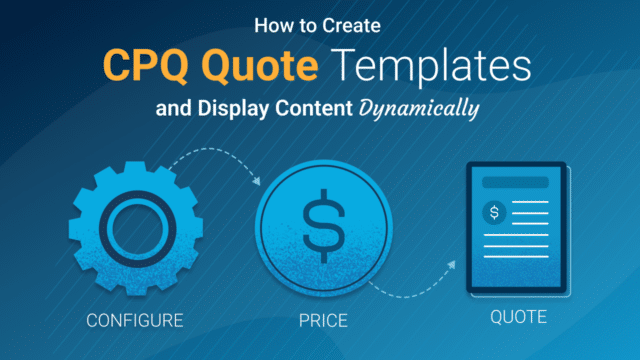Revenue Lifecycle Management (RLM) is a new revenue solution from Salesforce, offering a combination of Salesforce processes and technologies that help businesses manage Sales and Finance in a single unified system. It provides a solution to manage and increase revenue by streamlining and automating the sales process, from generating quotes to managing subscriptions.
While there are similarities to Salesforce Sales Cloud, RLM is specifically focused on managing the revenue lifecycle – from pricing and quote generation, to revenue recognition and renewals. It automates complex processes around billing and revenue management, while working seamlessly with existing Salesforce platforms.
The Revenue Lifecycle Management platform allows an organization to manage different stages of the sales cycle, from the initial quote, to contract negotiation to revenue recognition and finally subscription and renewal management.
Revenue Lifecycle Management vs Salesforce CPQ
For those who are well-versed in the Salesforce ecosystem, you may ask – how is this different from Salesforce CPQ? While both of these products have similar functionalities that help optimize the sales process, they serve distinct purposes.
Revenue Lifecycle Management (RLM): It provides end-to-end solutions for the entire lifecycle of revenue generation that includes different processes like lead generation, deal closing, quotes and order creation, contracting, invoicing, billing and revenue analysis. It is a broader concept that has multiple functions beyond CPQ. This suits businesses looking for comprehensive solutions to manage their entire revenue lifecycle, including sales, billing, and finance operations in a single system.
Salesforce CPQ: Salesforce CPQ is the solution that configures, prices and quotes the products in the organization. Complex products and services can be configured using features like product bundles, product rules, attributes, lookup queries, price rules, etc. It helps sales teams quickly generate accurate quotes and proposals by configuring products and services based on customer needs, pricing them accordingly, and generating professional quotes.
Integration with other Salesforce solutions and third-party applications is needed to extend its functionality and streamline the sales process, such as billing and invoicing.
Features of Salesforce Revenue Lifecycle Management
Below are a few key features that are provided by Revenue Lifecycle Management that can help organizations improve the management of sales and finance processes:
Product Design and Catalog
Product Design is crucial to designing the product portfolio using product catalog management. It serves as a repository of all the services and products provided by a Company. Product designers use various components such as attributes, product classifications, product bundles and rules. Even for complex products, once the products are properly designed and configured in the system, it is easy for the users to select the suitable product along with features and services.
Why is this useful: Product Design and Catalog allows businesses to manage their entire product portfolio in one place. This can lead to better product visibility, easier product management, and improved sales efficiency. By having all product information centralized, businesses can easily track product performance, make informed decisions based on accurate data, and quickly adapt to market changes.
Price management
RLM allows for the provision of various pricing options related to the needs of the product configurations for an organization. In this pricing platform, admins can create different pricing policies by applying discounts and adjustment methods to calculate the net price for the products. Some of the common pricing policies include price per user, tiered pricing, custom pricing, pricing based on contract length, subscription and additional fees, etc.
Why is this useful: Price Management provides companies with the ability to manage and optimize pricing based on business goals, market conditions, and business goals. It helps businesses maximize revenue, and also allows them to adapt quickly to changes in the market. Additionally, it helps customer relationships by offering fair and competitive pricing.
Quote and Order Management
Quote and Order Management in Revenue Lifecycle management support quotes and orders – from basic transactions to complex subscription lifecycles. Sales reps can create and manage quotes for the products and services and capture their orders. Organizations can also automate tax calculations.
Why is this useful: This feature enables businesses to generate accurate quotes quickly, even for the most complex subscriptions. This accelerates the order management process, and ensures that all orders are managed effectively. Ultimately, this can lead to increased customer satisfaction, improved productivity, and enhanced revenue growth.
Contract Management
Automation can be created to get the information from quotes or orders to the contract document. Contract creation includes contract terms, pricing, product/services and legal statements.
Why is this useful: Contract Management helps businesses optimize their processes around contracts, including creation, negotiation, approval, and renewal processes.It provides transparency and visibility into the entire contract life cycle, helping to ensure compliance and minimize risks. Beyond this, it can also aid in identifying opportunities for contract modifications or renewals, leading to improved revenue management.
Billing and Invoicing
The Billing and Invoice capabilities of RLM include automating billing processes, generating invoices, and managing subscriptions or recurring revenue models. Through Salesforce billing, comprehensive invoices can be generated with details regarding included products and billing frequency to the customer. Salesforce billing can handle and track customer payments or purchase orders.
Why is this useful: The billing and invoicing feature allows businesses to generate accurate and timely invoices, reducing errors and improving cash flow. It also enables businesses to manage and track invoices effectively, assisting in maintaining a clear and concise record of all transactions.
Einstein AI
Businesses can gain insights into their revenue performance through analytics and reporting tools, such as Einstein AI, which is included in RLM. It is easy to track key metrics, identify trends, and make data-driven decisions to optimize their revenue generation processes.
Why is this useful: Einstein AI can analyze large amounts of data swiftly, identifying trends and patterns in revenue operations that may not be easily noticeable. This feature can also automate routine tasks, freeing up time for staff to focus on more strategic initiatives.
Salesforce Revenue Lifecycle Management is a game-changer for organizations of all sizes. It provides a comprehensive approach to managing customer relationships and revenue streams, ensuring no opportunity is missed. By integrating sales, billing and revenue management functionalities into a single platform, organizations can streamline their sales processes, increase customer satisfaction, and ultimately drive more revenue. It’s not just a software solution, but a strategic investment that can significantly impact an organization’s bottom line.
Want to discuss Revenue Lifecycle Management and how it may be useful to your organization? Get in touch!



